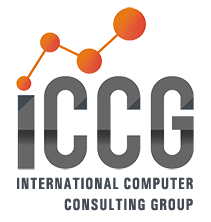Overcoming (old and new) challenges
Warehouses and distribution centers can face challenges that impact everything from inventory management to operational strategy to employee management and more. Some of these challenges are the result of technologies that place new pressures on organizations that aren’t yet equipped to handle them. Some of these pressures are a direct result of how authorities, people, and businesses were forced to adjust to 2020’s global pandemic. Yet, with every challenge also comes opportunity. Below are some of the major challenges that are facing organizations today—and how they can be turned into opportunities.
Pick optimization
Many organizations lack the level of item master data needed for optimal cartonization and ideal facility layout. Without the proper item and location slotting (based on concepts such as seasonality, promotional activities, and sales projections), poor inventory placement across the warehouse often results in increased costs and reduced productivity. Much of that lost time and effort, however, can be reclaimed when organizations implement smarter management of where inventory is kept in a warehouse or distribution center by improving their slotting processes. In addition, enhanced slotting can even enable the strategic selection of optimized picking processes, such as pick to pass, batch picking, pick to light, sorting, voice picking, and more to increase volume and throughput.
Inventory quantity and location accuracy
Visibility into inventory quantity and location accuracy within the warehouse are still lacking for many organizations. This may be due to a heavy reliance on manual inventory management processes such as spreadsheets, pick sheets, the absence of cycle counts, capacity constraints, or no digital monitoring. Without visibility into inventory quantity, organizations can suffer from declining fulfillment rates, stockouts, backorders, decreased service levels, waning customer loyalty, and lost sales.
Growth in e-commerce has created the need for local fulfilment centers
For some time now, organizations have had to make continual adjustments to their warehouse operations to meet the evolving challenges of global e-commerce. The unprecedented increase in e-commerce activity sparked by the large-scale disruptions of 2020’s global pandemic has only accelerated the need for organizations to be able to make near-instant adjustments to operations, increase scalability across new or larger facilities, and improve readiness to introduce new business models.
Employee safety and health is accelerating automation adoption
The increased mandates for social distancing and personal protective equipment that resulted from 2020’s global pandemic have altered how warehouses function. New challenges and limitations on how workers perform their jobs could accelerate the implementation of robotics and automation into warehouse operations. For example, US apparel chain, Gap, expedited its rollout of warehouse robots for online order assembly in order to reduce the amount of human interaction within their fulfillment centers. While the adoption of robotics and automation is not a new concept, the immediate safety measures undertaken within warehouses across the globe as a result of 2020’s global pandemic could become permanent in many instances— resulting in higher levels of robotic deployment much sooner than originally anticipated.
Ongoing labor shortages
Even before the disruptions from 2020’s global pandemic, the logistics sector was suffering from a significant labor shortage. The pandemic further exacerbated the situation in two key ways: more workers were needed to meet the significant uptick in the amount of merchandise being shipped (particularly in grocery and e-commerce retail); while many organization struggled to meet demand because many workers didn’t come to work out of fear of getting sick. Many organizations responded by increasing headcount to meet heightened demand and ensure enough employees were available if some workers required extended absences. To keep warehouses running smoothly under this “new normal,” many organizations implemented advanced scheduling strategies, employee health checks, and routine sanitation schedules to ensure safety measures were maintained.
Customer segmentation and 3PL billing processes
Specialized and customized services are becoming increasingly common expectations from customers. To provide these services, and do so profitably, requires segmenting operations and evaluating cost-to-serve models. With more organizations seeking to outsource fulfillment operations to third-party logistics (3PL) service providers—many of which serve numerous customers across a variety of industries—knowing how much to charge for specific services is critically important. However, many organizations have yet to adopt a true cost-toserve strategy and continue to render “blanket pricing,” despite fulfilling the nuanced needs of customers. This typically results in higher fulfillment costs and lower revenue due to missed opportunities.
Streamlined reverse logistics due to returns and recalls
As omni-channel orders have increased, so have customer returns. For example, a consumer may place an online order for the same shirt in three different sizes, with full intent on returning at least two of the items received. The labor and shipping costs associated with the order will most likely outweigh the revenue associated with that order. For returns (and recalls too), having a streamlined reverse logistics strategy can ensure items are properly marked for resell, repair, or recycle and help maximize a product’s lifecycle and profitability.
Improving workplace culture
Before 2020’s global pandemic, e-commerce was experiencing low double-digit growth. Once 2020’s quarantines and other abatement practices went into effect, e-commerce grew by 77%, according to Forbes. This represents a jump in spending that would have otherwise taken between by four to six years. Some traditional retail brands have reinvented themselves as e-commerce warehouses. For example, with an 85% increase in online sales, Bed Bath & Beyond converted 25% of its stores to regional fulfillment centers in April 2020.
With this comes a drastic transition to the labor force, as retail employees are absorbed by the fulfillment, distribution, and warehousing sectors. While Bed Bath & Beyond reopened 600 stores and restored roughly 11,000 furloughed employees in June 2020, many of these employees will have distinctly different roles that require new skill sets. Organizations looking to attract and retain new workers will need to adapt their recruiting, onboarding, and training methods to provide both new and existing workers with tools that help ensure their success.
To learn more about how you can drive operational excellence in the warehouse, checkout the complete best practices guide.
Learn more about how ICCG can help. Questions about how ICCG can help you? Let us know here.


